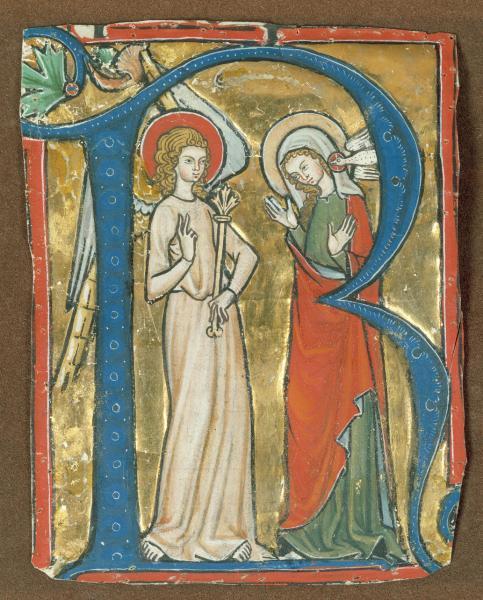
Preparing Our Souls for Advent – An Advent Primer
Anticipating Advent in the midst of the clutter, noise and anxiety of the current cultural pulls is an invitation to shift and prepare our souls for celebrating the coming of Christ—Emmanuel—God with us.
The word “advent,” from the Latin adventus (Greek parousia), means “coming” or “arrival.” The Advent Season is focused on the “coming” of Jesus as Messiah (Christ or King). Christian worship, Bible readings, and prayers not only prepare us spiritually for Christmas (His first coming), but also for His eventual second coming.
Rich in symbolism, the Advent season allows the church to experience the joy, expectation and complexity surrounding the coming of the Messiah and to ponder its mystery. It begins with the last Sunday in November for four Sundays. Bible readings during Advent include both Old Testament passages related to the expected Messiah, and New Testament passages concerning Jesus’ second coming as judge of all. Also, passages about John the Baptist, the precursor who prepared the way for the Messiah, are read.
The traditional church calendar acknowledges one of the components of the Christmas story at each of the four Sundays prior to Christmas Day.
It is a a time to rejoice, to give, to celebrate, but there is also within this season an invitation to reflect.

A tangible way to offer reflection in the four Sundays of Advent is with the advent wreath.
While the Advent wreath with its four candles did bring light to churches, it was not to illuminate the interior as much as to symbolize the coming of Christ.
The Advent wreath began at the time of the Protestant reformer Martin Luther.
Not having grown up in a liturgical tradition it was helpful to me to have a basic advent primer and realize that heart reflection can be visualized by an advent wreath or candle stand. You need five candles and some kind of candle stand or holders.
The Advent wreath, four candles on a wreath of evergreen, is shaped in a perfect circle to symbolize the eternity of God. In some churches, four purple candles, one for each week in Advent, are used with one larger white candle in the middle as the Christ candle. Other churches prefer three purple or blue candles with one candle being rose or pink, to represent joy.
During each Sunday of the Advent season, we focus on one of the four virtues Jesus brings us: Hope, Love, Joy and Peace. Others consider the lighting of the first candle to symbolize expectation, while the second symbolizes hope, the third joy and the fourth purity. The Christ candle is lit on Christmas Eve or Christmas Day reminding Christians that Jesus is the light of the world. The order and exact wording vary among churches, but the wreath continually reminds us of whom we are called to be as followers of Jesus.
For example :
First Sunday of Advent – Hope – God has a perfect plan: Isaiah 7:14; Luke 1:26-38; light the prophecy candle
Second Sunday of Advent – Love – God chose a special birthplace: Micah 5:2; Luke 2:1-7; light the Bethlehem candle plus the first one
Third Sunday of Advent – Joy – God sent royal messengers with a message of good news: Luke 2: 8-14;15:10; light the joy candle (preferably rose colored, symbolizing joy);.
Fourth Sunday of Advent – Peace – God uses ordinary people: Luke 2:8-20 light the shepherd candle plus all four candles.
Christmas Day – Jesus is the Light of the world and provides salvation – God has chosen you: Luke 2:1-20; Ephesians 1:4.
How can we not rejoice when you realize what God did in taking on human flesh and coming to earth to live among us and die for our sins.
In the image at the beginning of this post : R is for Rejoice in this manuscript illumination from a Dominican choir book (Upper Rhenish, 14th century). “Protected by the arching curve of the blue-and-white letter R, the standing figures of the archangel Gabriel and the Virgin Mary are set against a burnished gold background. The barefoot angel wears a simple salmon-colored tunic, belted at the waist, and holds a staff. His right hand raised and his wings outstretched, he addresses the Virgin Mary, who stands before him and lifts both hands as the dove of the Holy Ghost whispers in her ear. It was probably painted about 1300 by the Dominican nuns at the convent of Sankt Katharinenthal on Lake Constance.
This image reminds us that Advent is a time of rejoicing and a time for soul-reflection of deep appreciation and worship of Emmanuel – Jesus the Christ, the son of God, who came to be with us and die for our sins.This will anchor your soul in the midst of the alternate focuses and distractions of the season. May awareness of His Presence bring you deep joy in your soul as you celebrate His birth.
Other resources to help make celebrating Advent part of your Christmas tradition:
http://www.gordonconwell.edu/resources/2019-Advent-Sign-Up.cfm
http://www.christmas.dts.edu Christmas devotional booklet
Picture credit http://www.metmuseum.org/toah/works-of-art/1982.175/
http://www.umc.org/what-we-believe/what-do-the-candles-in-our-advent-wreath-mean
*This blog post was originally published on November 16, 2016.




